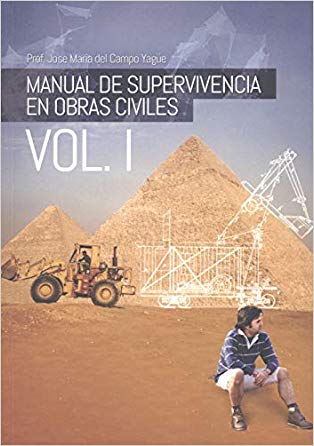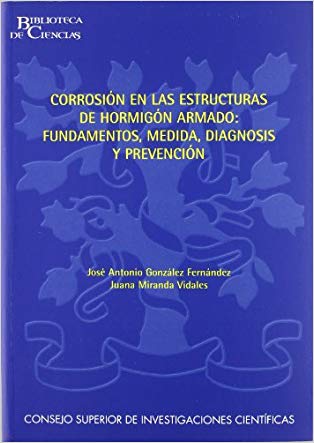Ir al contenidoINGENIERÍA CIVIL, TOPOGRAFÍA Y CONSTRUCCIÓN






 Each year 2.7 billion tonnes of waste are thrown away in the European Union but, on average, only 40% of solid waste is re-used or recycled, the rest going to landfill or incineration. In this situation, various waste management strategies consider valuation as a green and sustainable philosophy that involves the reduction of waste through reuse as raw material for new products. Recycling can eliminate a substantial portion of both purchasing raw materials and disposal costs of products after their life cycle completed. In particular the construction sector is one of the principal actors in the overconsumption of resources and therefore, there is a large potential and environmental incentive to reduce material and energy consumption through resource-efficient construction. To succeed in stopping the impact the construction sector produces on the environment, there is the need to develop new technological tools. Among them, turning waste into new materials may have a significant saving regarding its embodied impact over primary raw materials and thus, recycling different waste into building products is worldwide being studied. The aims of the Workshop are to review, to analyze and to discuss research activities regarding the recycling of waste for materials production, improving how to understand, to manage and to value waste and encouraging new initiatives towards resource efficiency and added value. The Workshop will promote smart specialization and cooperation within the European research area and the rest of the world.
Each year 2.7 billion tonnes of waste are thrown away in the European Union but, on average, only 40% of solid waste is re-used or recycled, the rest going to landfill or incineration. In this situation, various waste management strategies consider valuation as a green and sustainable philosophy that involves the reduction of waste through reuse as raw material for new products. Recycling can eliminate a substantial portion of both purchasing raw materials and disposal costs of products after their life cycle completed. In particular the construction sector is one of the principal actors in the overconsumption of resources and therefore, there is a large potential and environmental incentive to reduce material and energy consumption through resource-efficient construction. To succeed in stopping the impact the construction sector produces on the environment, there is the need to develop new technological tools. Among them, turning waste into new materials may have a significant saving regarding its embodied impact over primary raw materials and thus, recycling different waste into building products is worldwide being studied. The aims of the Workshop are to review, to analyze and to discuss research activities regarding the recycling of waste for materials production, improving how to understand, to manage and to value waste and encouraging new initiatives towards resource efficiency and added value. The Workshop will promote smart specialization and cooperation within the European research area and the rest of the world.





 Each year 2.7 billion tonnes of waste are thrown away in the European Union but, on average, only 40% of solid waste is re-used or recycled, the rest going to landfill or incineration. In this situation, various waste management strategies consider valuation as a green and sustainable philosophy that involves the reduction of waste through reuse as raw material for new products. Recycling can eliminate a substantial portion of both purchasing raw materials and disposal costs of products after their life cycle completed. In particular the construction sector is one of the principal actors in the overconsumption of resources and therefore, there is a large potential and environmental incentive to reduce material and energy consumption through resource-efficient construction. To succeed in stopping the impact the construction sector produces on the environment, there is the need to develop new technological tools. Among them, turning waste into new materials may have a significant saving regarding its embodied impact over primary raw materials and thus, recycling different waste into building products is worldwide being studied. The aims of the Workshop are to review, to analyze and to discuss research activities regarding the recycling of waste for materials production, improving how to understand, to manage and to value waste and encouraging new initiatives towards resource efficiency and added value. The Workshop will promote smart specialization and cooperation within the European research area and the rest of the world.
Each year 2.7 billion tonnes of waste are thrown away in the European Union but, on average, only 40% of solid waste is re-used or recycled, the rest going to landfill or incineration. In this situation, various waste management strategies consider valuation as a green and sustainable philosophy that involves the reduction of waste through reuse as raw material for new products. Recycling can eliminate a substantial portion of both purchasing raw materials and disposal costs of products after their life cycle completed. In particular the construction sector is one of the principal actors in the overconsumption of resources and therefore, there is a large potential and environmental incentive to reduce material and energy consumption through resource-efficient construction. To succeed in stopping the impact the construction sector produces on the environment, there is the need to develop new technological tools. Among them, turning waste into new materials may have a significant saving regarding its embodied impact over primary raw materials and thus, recycling different waste into building products is worldwide being studied. The aims of the Workshop are to review, to analyze and to discuss research activities regarding the recycling of waste for materials production, improving how to understand, to manage and to value waste and encouraging new initiatives towards resource efficiency and added value. The Workshop will promote smart specialization and cooperation within the European research area and the rest of the world.



 Actualmente la fabricación de estructuras de hormigón supera a la del resto de materiales de construcción considerados conjuntamente. Este hecho unido a la importancia técnica, económica y social del sector de la construcción explica que el deterioro de las estructuras de hormigón armado se haya constituido en el reto principal de la ingeniería civil en el mundo desarrollado. Los autores de este libro, basándose en su experiencia de más de tres decenios, pretenden despertar en los estudiantes, técnicos e investigadores la inquietud por el análisis de las causas que provocan la corrosión y la descripción de los métodos de prevención, protección, rehabilitación y reparación más eficaces.
Actualmente la fabricación de estructuras de hormigón supera a la del resto de materiales de construcción considerados conjuntamente. Este hecho unido a la importancia técnica, económica y social del sector de la construcción explica que el deterioro de las estructuras de hormigón armado se haya constituido en el reto principal de la ingeniería civil en el mundo desarrollado. Los autores de este libro, basándose en su experiencia de más de tres decenios, pretenden despertar en los estudiantes, técnicos e investigadores la inquietud por el análisis de las causas que provocan la corrosión y la descripción de los métodos de prevención, protección, rehabilitación y reparación más eficaces.




